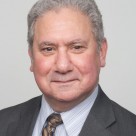LOS ANGELES--Investors moving from CBDs to less obvious acquisition targets don't have to travel from Manhattan to Tulsa, or even L.A. to Phoenix. Andrew White, CCIM, finds his investment dance card filled typically by a 15-minute drive out of town. “The Rise of the Secondary City” will be a main topic of conversation at the upcoming CCIM THRIVE conference at the Westin Bonaventure Hotel here, and White, himself a CCIM and managing director of Gladstone Commercial, will join a panel of experts to share insights on secondary-city investment. But in this exclusive preview, he provides a clear picture of how he goes about landing these diamonds in the 'burbs.
GlobeSt.com: Where are you finding activity these days?
Andrew White: Let's start by talking about our process, because that will help answer the question. First, we look at the macroeconomic environment. We do a top-down analysis of what markets, primary or not, are doing well and why. We look at in-migration and out, and the taxes and the attitude toward business. Then we focus on the real estate market. We love Denver, for example. It's got great fundamentals and diversifying economic drivers--energy and tech, and it's a great place to live. In that manner, we look at Seattle, Silicon Valley, Portland, Denver, L.A., San Diego, Phoenix or Salt Lake City. In Denver, we'd love to be in the LoDo area, near the new transit station.
GlobeSt.com: And you're busy in Denver these days.
White: We've purchased three properties in Denver, plus we're in contract for a fourth and have an offering on a fifth. We intend to build a large presence there. So, as I said, we love LoDo, and when we shopped for real estate, we saw a building built in 2013. It's a LEED-certified, class A building that's 100% leased with an average term of 10 years remaining. But it trades at $600 a foot at a 5-¼ cap. Not only is that going back to 2007 levels, it's also a new record for Downtown Denver.
GlobeSt.com: So you didn't buy?
White: We did our homework and we went 15 miles south on the 25 Freeway to the definitely secondary Southeast Suburban submarket, to Inverness, and found a class-A LEED-gold building 100% leased for 10 years. And we were able to get it for $183 a foot and a 7.7 cap. Generally speaking, there's at least a 200-basis point premium you can get in the secondary market, and you can still buy below replacement cost. Replacement on this building would be in low $200s. It's a great risk adjusted return.
GlobeSt.com: Let's hear about some other cities with the same dynamic.
White: In the past six months or so, KBS purchased a class A high-rise in the Salt Lake City CBD. It has a good tenant roster, including Goldman Sachs. They paid $400 a foot in the 5 caps. That's not only back to 2007 levels but again it's a new record for the Salt Lake City CBD. It's the best of the best. But it doesn't work for us. It might work for a larger institutional, conservative pension fund, but it doesn't work for a value-add real estate investor that needs to make some money.
GlobeSt.com: So?
White: So we went out to a suburban market about 15 minutes outside of the CBD and found a building in the city of Draper, a new build, 100% leased asset with great credit tenants and proximity to retail and housing. It was about half the price of the asset I referenced, probably in the 7-½ to 7-¾ caps, again with a 200-to-250-basis-point premium on the cap rate. We think it's a better value. And I can go on with similar stories in places like Seattle and San Francisco.
GlobeSt.com: Of course, one of the major draws of secondary cities is the relative lack of competition. What are you finding?
White: It's much less. The bigger institutions wouldn't even consider these, regardless of the value and fundamentals, they wouldn't even think about it. But that's starting to change, at least at this point, based on some of the panels I've sat on and the stories that I've been reading on GlobeSt.com. Even the institutions are starting to see that they can't get yield anymore in San Francisco. All the numbers are above replacement cost. But for now, I am passionate about investing in secondary cities. Being in a location like LoDo in Denver is superior, but if I can get a 200-basis-point premium on a cap rate for less than a third of the price, I feel pretty good about that.
© 2025 ALM Global, LLC, All Rights Reserved. Request academic re-use from www.copyright.com. All other uses, submit a request to [email protected]. For more information visit Asset & Logo Licensing.








